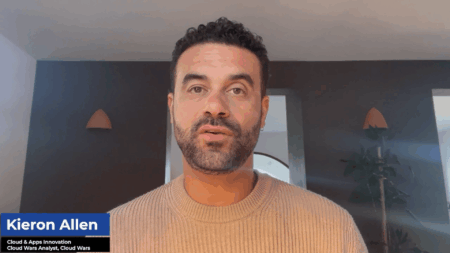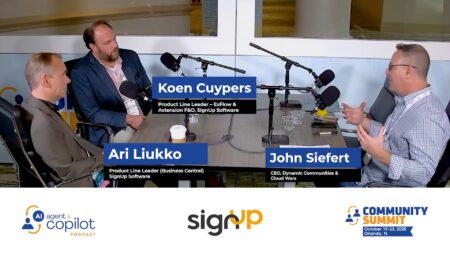Much has been written about helping employees navigate burnout. However, little advice has been shared about burnout from a leadership perspective.
For business leaders, everywhere we turn, we’re trying to figure out how to balance and navigate life’s complexities — managing customer and team needs, ensuring we have time with our family, addressing society’s ever-growing complexities, and leading our organizations through uncertain times, to name a few. The pace of change we live and lead in is relentless. We’re understandably feeling the non-stop pace to thrive and be part of the acceleration economy.
Business executives take on leadership roles because we are driven to succeed. But if you don’t take inventory, build in time to reflect, and purposefully insert speed bumps to slow down and breathe, it is quite easy to burn out. You carry so much stress for so long that you are left with zero margins for error. A recent article in Harvard Business Review described it as “living without margins” or having no space to manage the little stresses of life and business.
The positive news is that CXO burnout is becoming a recognized challenge. More leaders, board members, and business leadership coaches are taking action to help us always-on, over-achieving leaders from burning out.
Recognizing CXO Burnout
Burnout has become a concept that can mean different things to different people. This definition a colleague shared with me rang true:
“Burnout is what happens when you try to avoid being human for too long.”
The World Health Organization (WHO) defines burnout as “an occupational phenomenon in the International Classification of Diseases’ chapter on factors influencing health status.” The WHO notes that burnout results from chronic workplace stress defined by three dimensions:
- Energy depletion or exhaustion
- Increasingly negative feelings toward the job
- Reduced professional efficacy
Leadership burnout is the feeling of physical and emotional exhaustion that senior managers and high-performing managers feel when they overburden themselves with too much work or neglect to spend time on their wellness techniques. Tim Cook, CEO of Apple, shared after taking over from Steve Jobs and running one of the world’s most iconic companies: “It’s lonely at the top,” as he admittedly works to navigate burnout and the stresses of being a CXO.
Restless sleep, loss of motivation, exhaustion, increased irritability, and feeling that every day at work is a dreadful day are all signs that we’re headed to burnout. Turning to workplace and mental health care experts, here are proactive steps and techniques that CXOs can use to avoid and navigate burnout and all the consequences that come with not addressing mental health and breaks.
Acknowledge and recognize burnout.
Acknowledging burnout is difficult for executives. However, it is an essential step for mental health and present leadership required to lead teams, steer the business, and meet customer and stakeholder expectations.
Studies show people who are more mindful report lower levels of workload stress, and as a result, feel less emotionally exhausted. If we can remain present under pressure, we can make better decisions — responding thoughtfully and thinking through decisions, rather than reacting out of habit. Workplace experts recommend ways to clear your mind and provide space to think, including:
- Meditating to slow down and pay more attention to your thoughts and emotions
- Making time to think about alternative views pertaining to challenges and opportunities
- Being self-aware of how your values, beliefs, and assumptions impact your actions
Prioritize and delegate more.
We can’t do it all, nor should we. As a CXO, this is where the ability to develop, set, and communicate vision, purpose, and mission really matters. Having a clear purpose will make it easier to overcome even the most difficult obstacles. It’s also important to regularly reflect and revisit your purpose and what’s important to you and the company. This “step back” technique helps keep us on task.
Establishing clear direction and involving stakeholders in developing strategies also provides a framework to keep the right people and resources focused on the right initiatives, including yourself. It becomes the basis for setting priorities and making decisions. Further, it holds the right levels of accountability throughout your leadership team.
As businesses grow, leaders relinquish control over responsibilities we may have once owned. If roles and work are not delegated properly, leaders can easily be overwhelmed, leading to reduced productivity and burnout. By delegating work effectively, we prevent burnout and stress as well as enhance our teams’ collective impact. We also empower employees to take on new responsibilities and expand their skill sets.
Set boundaries.
Commitment is part of executive leadership. But there is a difference between commitment and over-commitment.
Leaders are expected to be accessible and responsive at all times. Overcommitment can quickly lead to burnout. We have to set boundaries. We have to make smart choices about those extra business trips versus your child’s recital. Additionally, we have to make smart choices about the middle of the night Zoom calls you jump on at midnight versus a good night’s sleep to be ready and refreshed for the day ahead.
While the reality and burdens are many, we must set boundaries and make these activities the exception and not the rule for the way we do business.
Make burnout an open discussion.
CXOs can seek out and establish resources for employees — and themselves — including coaching and counseling. These resources are often available through company insurance plans. However, these programs are only used as much as the programs are promoted, and the signs and feelings of burnout and mental wellness are openly discussed. This is another case for CXOs to make empathy and openness part of their culture.
Also, leadership doesn’t always have to be lonely and isolated. As a leader, you can also discuss your critical issues with other leaders across the globe through executive organizations — such as Vistage, Young Presidents Organization (YPO), or Entrepreneurs Organization (EO) — to get connected and be part of a CXO group that provides hands-on support and guidance from executive peers who are also facing similar issues. These executive organizations can not only be a valuable network, but can also help eliminate the feeling of isolation.
Focus on healthy habits.
It’s hard to leave work at work when business and the acceleration economy are always on. But when we detach during off-hours, workplace experts report higher levels of life satisfaction, better sleep, less emotional exhaustion, and better overall health. That’s why it’s so important to make exercise, healthful eating, and sleep part of your daily routine.
In fact, recent research has found that proper sleep and exercise have tangible benefits. Exercise causes our brains to release a protein called brain-derived neurotrophic factor (BDNF), also known as Miracle-Gro for the brain. It stimulates new neuronal growth and protects brain cells from stress. The better we take care of our brains, the better leaders we can be.
We also must make time for things other than work. In fact, we must schedule them. Mixing in your hobbies, passions, time with family and friends, vacations, getaways, and even thinking and reflection time are essential. Making conscious choices will help manage the natural energy level ebbs and flows creating greater motivation, engagement, creativity, and productivity.
Lead by example.
Not proactively acknowledging and addressing burnout not only hurts your career but the “living without margin” work style can negatively impact every aspect of your life. Just as bad, your employees, colleagues, and business take on your stress. Know that employees are watching and emulating what you do.
A reminder to all of us is to lead by example. Take the time to reflect, refresh, and maintain mental and physical health. Make burnout and work-life prioritization an open discussion amongst your leadership team and across your company. It starts with acknowledging the reality of the pressure of work and life and that this challenge is present in every organization and every one of us.
Want more tech insights for the top execs? Visit the Leadership channel:










